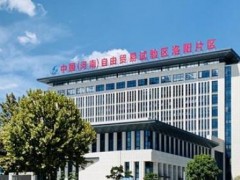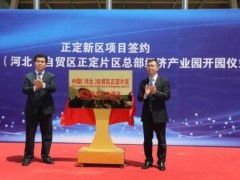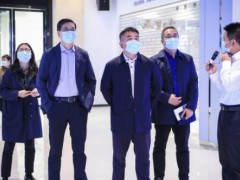在此背景下,6月27日上午,盘古智库在京举办《中日韩自贸区谈判及前景分析报告》发布会,为助力研究国际大变局下中日韩自贸区建设的现状与未来,积极建言献策。报告课题组成员包括:盘古智库学术委员会副主任委员、南京大学国际关系研究院院长、中国南海研究协同创新中心执行主任朱锋,南京大学中国南海研究协同创新中心研究助理秦恺、周嘉希、周诗仪,盘古智库学术委员会副秘书长王岳,盘古智库东北亚研究中心执行主任岳立,盘古智库东北亚研究中心研究员罗震,美国约翰霍布金斯大学国际关系学院陈果。中国社科院日本研究所副所长张季风对本项研究也有诸多贡献。
本报告英文版分为(上)、(中)、(下),本文为报告英文版(上),盘古智库微信公众号特作发布,以飨读者。报告中文版见文末相关阅读。
”
报告目录
The Report of China-Japan-ROK FTA Negotiations and Perspective Analysis
The three countries of China, Japan and South Korea are geographical neighbors as well as economic and trade partners. The relations between them are of great importance. Among China's trading partners, Japan ranks the third which next only to the EU and the US. South Korea, in addition, ranks fifth among China's trading partners. According to the trade statistics bulletin of May released by the Ministry of Finance of Japan in 2017, China has overtaken the United States to become Japan's largest export destination and has maintained the status of Japan's largest source of imports. Meanwhile, South Korea is the third largest export destination and the fourth largest source of imports of Japan. As to South Korea, China has become its largest export destination since 2003 and has ranked the first of South Korea's source of imports since 2007. Moreover, Japan, according to statistics, is the fifth largest export destination and second largest source of imports of South Korea. Furthermore, China, Japan and South Korea have established prominent Foreign Direct Investment (FDI) partnerships, which have contributed to the development of trade between the three countries. The vigorous trade and investment partnerships between China, Japan and South Korea, as mentioned above, should be taken seriously to promote the conclusion of the free trade agreement. Thereafter, the flow of labor forces, financial resources and commodities in this region can be promoted. In addition, the free trade agreement will add to the economic vitality of this region and to ensure sustained development of the economy in East Asia.
Sixteen years ago, the idea of establishing the Free Trade Area was put forward at the 2002 Trilateral Summit Meeting of China, Japan and South Korea. However, the framework agreement has not been reached so far due to various reasons. Nowadays, China, Japan and South Korea are all strong economies, and rank the second, third and eleventh in the world economy respectively. The establishment of the Free Trade Area will undoubtedly boost the economy in East Asia and promote the further integration and development of the economies in these three countries. In 2019, the total economic output of China, Japan and South Korea is expected to reach 21.09 trillion US dollars, which is close to the US-led United States-Mexico-Canada Agreement (USMCA). Meanwhile, this number is about 8 trillion US dollars more than the Comprehensive Progressive Trans-Pacific Partnership (CPTPP) led by Japan, whose total GDP in 2018, according to the statistics from the International Monetary Fund (IMF), was 13.21 trillion US dollars. In terms of trade share, in 2017, the sum of exports of China, Japan and South Korea accounted for 96% of the total exports in Northeast Asia and the imports of these three countries took up 81% of the overall regional imports. As for investment, the FDI attracted by China, Japan and South Korea made up 62.5% of the total FDI attracted by East Asian countries as a whole, while the sum of the FDI in China, Japan and South Korea took over 75% of that in East Asian. In East Asia, the economies of China, Japan and South Korea have undoubtedly taken the leading position. In addition, their economies have strong complementarities in the field of industrial structure, consumer market and investment trend. The economies and societies of the three countries, in other words, have good conditions for further integration and institutionalization. In the face of trade protectionism and trade hegemonism promoted by the Trump administration, the establishment of the FTA agreement between China, Japan and South Korea will not only enhance the appeal of an "open, inclusive and free" international trade, but will also be an powerful action of the three countries to jointly oppose trade protectionism. However, the prospect of establishing a Free Trade Area between China, Japan and South Korea in the short term is not optimistic, in consideration of current situation.
Part One. China-Japan-ROK FTA:
New Requirements under the New International Situation
After the Trump administration took office on January 20, 2017, global trade protectionism and unilateralism became increasingly popular, which seriously challenged economic globalization and the free trading system. The “America First” philosophy of Trump administration began to run through many fields of US diplomacy, trade, military, energy, and immigration. One of the most apparent and significant changes was the shift of its international economic and trade policy. Under the leadership of the Trump administration, the policy has shifted from liberalism to protectionism. While the US continuously imposed tariffs on the exports from its trade partners, it also made significant adjustment for its regional free trade negotiation process. From the announcement of its withdrawal of the Trans-Pacific Partnership Agreement (TPP), to the renegotiation of North American Free Trade Agreement (NAFTA), and then the suspend of Transatlantic Trade and Investment Partnership (TTIP) negotiation, the Trump administration has implemented unilateralism and trade protectionism recklessly. The most striking action among these was the use of Section 301 of its domestic trade law by the US government to provoke trade frictions between China and the US.
In January 2018, the Trump administration announced tariffs of 30% and 50% on Chinese washing machines and photovoltaic products respectively. On March 9, Trump signed a tariff bill to impose a 25% and 10% tariff on Chinese steel and aluminum products respectively. On top of that, on July 6, the Trump administration imposed a 25% sanctioned tariff on China's $34 billion imported products, including 818 items in aerospace, information and communications technology, and industrial machinery, etc. On September 24th, the US government announced that it would impose a tariff of about 10% on China's products which worth 200 billion US dollars, and it also showed an intention to increase the tax rate from 10% to 25% in the future. In sum, Trump administration has put extreme pressure against China on trade issues, and has taken no consideration to the consultation procedures between the two countries. It also completely ignored the WTO trade arbitration mechanism. Such actions not only brought huge economic damage to China and the United States, but also have negative impacts to the global economy. Although China and the United States have entered the negotiation stage of the trade friction, the future of the trade relationship between the two countries is still in the shadow.
In January 2019, in its World Economic Outlook, the IMF lowered its forecast for US economic growth in 2019 from 2.7% to 2.5%. According to IMF, the global economic growth is expected to fall from 3.7% in 2018 to 3.5% in 2019. The IMF stressed that the US government's trade initiatives, especially its tariffs on nearly half of the goods imported from China, have a devastating effect on global economic growth and prosperity. The World Economic Outlook published on October 2018 pointed out that “An intensification of trade tensions, and the associated rise in policy uncertainty, could dent business and financial market sentiment, trigger financial market volatility, and slow investment and trade. Higher trade barriers would disrupt global supply chains and slow the spread of new technologies, ultimately lowering global productivity and welfare. More import restrictions would also make tradable consumer goods less affordable, harming low-income households disproportionately.“
Figure 1 The trade relations between China, Japan and South Korea
The data in Figure 1 clearly indicates that during the decade of 2007 to 2017, the trade relations between China, Japan and South Korea followed an upward trend, despite some ups and downs. After 2016, as it shows, the trade between these three countries have witnessed a significant increase. Although Japan's exports to China declined from 2011 to 2016, its imports from China increased simultaneously. Therefore, the economic interdependency and overall trade relations between the two countries were generally stable.
The China-US trade war is still in a difficult negotiation period. In any case, the China-US trade friction has brought negative impact to the economic development of both countries. The trade protectionism of the United States also caused serious damage to the rules and institutions of globalization. Moreover, the external environment of China's economic development has also undergone a considerable transformation. The long-term cooperation and complementary partnership between China and the United States has been forced to transform into a competitor relationship. The most apparent indication is the reduction in direct trade between the two world's largest economies. However, such dilemma may prompt China to seek for more trade partners and to pursue more extensive and in-depth cooperation with other economies to offset the negative effects of China-US trade frictions. In addition, in the context of the intensified trade friction between China and the United States, the United States has increasingly defined China as a strategic competitor, and tried to use the security as an excuse to intensify its efforts to draw Japan and South Korea to its side. Although Japan and South Korea have close relationships with China and will not completely turn US, it does not exclude the possibility that the two countries, which are under pressure from the United States, will follow US policy in certain key areas. Therefore, whether considering economics or the overall situation of China's major neighbouring diplomatic moves, China must strengthen its ties with Japan and South Korea and avoid the situation that Japan and South Korea try to take side between China and US. Therefore, for China, the promotion of the FTA negotiations between China, Japan and Korea is "just right on time".
The 'America Priority' trade protectionism promoted by Trump administration has also brought challenges to Japan and South Korea. As the most determined ally of the US in Asia, Japan has undergone a series of difficulties triggered by its US counterpart. First of all, after Trump took office, the United States stepped up its trade sanctions against Japan and launched anti-dumping investigation procedures against some of Japan's major exports to the United States. In the 2017 National Trade Estimate Report on Foreign Trade Barriers, Trump administration pointed out that there are “a broad range of barriers” in Japan's agricultural market, “as well as barriers to entering and expanding the presence of U.S. products and services in the Japanese market” in the field of automobile. In the face of the strong pressure exerted by the Trump administration on trade, the Abe administration has maintained restraint and tolerance. On the one hand, it actively communicated with the Trump administration, hoping to minimize the losses caused by the trade friction between Japan and the United States. On the other hand, it has launched a series of measures to further expand the breadth and depth of US-Japan economic cooperation as well as ease the tension of structural contradictions, including encouraging Japanese companies to invest in the United States to set up factories, expand the scope of energy trade with the United States, and promote the civil use of nuclear energy, etc.
Secondly, Trump signed an executive order three days after he took office, announcing the US withdrawal from the Trans-Pacific Partnership Agreement (TPP), which was vigorously pursued during the Obama administration. This action was quite a shock to the Japanese government who would have had high hopes for the TPP. Before the withdrawal of the US, Japan has firmly regarded the TPP as an dominant institution to the Asia-Pacific trade mechanism, and thus actively participated in the negotiations of the TPP. In order to achieve cooperation, Japan even made drastic reform in its agricultural sector that has hindered its liberalization process for many years. Trump's action has aroused much resentment and disappointment among farmers and government members as well as some elites in Japan. Sankei Shimbun, one of the mainstream media in Japan, published an editorial, stating that "the withdrawal of the United States has caused TPP members to lose the potential benefits created by economic liberalization. Moreover, the United States still intends selfishly to seek economic interest without the restriction of TPP, which is disillusionary. Japan must decisively reject the unreasonable demands of the United States." On the contrary, some conservatives believe that the continued involvement of the United States is a prerequisite for maintaining stability and prosperity in the Asia-Pacific region. Furthermore, the TPP has built the institutional benchmark for the Asia-Pacific economy. Therefore, persuading the United States to “change its mind” and return to the TPP is the best way to achieve the stability and economic prosperity of this region. There are also supporters indicating that Japan should take its role as the “Head of the TPP” and lead the formulation of the TPP, which covers 11 countries, without US participation.
In fact, Abe, as the strong supporter of the TPP, had two strings to his bow: First, let Japan replac the United States as the leader of the TPP agreement, actively leading the follow-up process of negotiations and the setting of related issues, and take the initiative to invest in political and economic resources for the promotion of the TPP negotiations. At the same time, while adhering to the two principles, "high level" and "high standard", he hoped to extend the TPP standards throughout the Asia-Pacific region. The second was to insist on lobbying the Trump administration, hoping to change its mind and leave room for the return of US as much as possible. In fact, in the face of the transformation of a series of trade policies after the Trump administration took office, Japan, as a staunch ally of the United States, had more flexibility in policy adjustment out of its own strategic considerations and economic growth demands. Despite Japan's dissatisfaction with US trade protectionism, Japan's economic dependence on the United States was as strong as external strategic one. Therefore, their reaction to the United States was comparatively more restrained and manifested, showing as positive cooperation and compromise. At the same time, Japan had been in a chronic recession since the collapse of the bubble economy in the early 1990s. Japan hoped to promote domestic foreign trade, investment, etc. through economic cooperation mechanisms in the Asia-Pacific region such as CPTPP, RCEP, China-Japan-ROK FTA for the promotion of domestic economic growth. Advancing the construction of the China-Japan-Korea trilateral free trade Area is still one of the choices of the Abe government.
At the same time, US policies also brought serious challenges to South Korea. During the campaign, Trump stressed the need to restart the Korea-US FTA negotiations. The topics include: the United States requires South Korea to eliminate non-tariff barriers related to imported cars, South Korea requires the United States to improve the national litigation system, and to regard South Korea as the exceptional country when it comes to impose tariffs on steels and so on. In addition, on September 2018, the North American Free Trade Agreement (NAFTA) signed the new version of the United States-Mexico-Canada Agreement (USMCA). According to the report of the Korea International Trade Association (KITA), the new United States-Mexico-Canada Agreement requires that 75% of the Kia auto parts must be manufactured within the three countries, which should be higher than the current 62.5%. Kia Motors will face the problem of the rising costs of manufacturing. Car exports in South Korea may dro 22.7%. On the other hand, the US-led TPP has become a CPTPP participated with 11 countries including Japan. The absence of the United States highlighted the more important role of the Regional Comprehensive Economic Partnership (RCEP) and the China-Japan-ROK FTA. Therefore, although South Korea signed the new Korea-US Free Trade Agreement in September 2018, the focus of future trade liberalization development are still the China-Japan-Korea FTA and RCEP that have more potential.
There was a lot of opposition in South Korea on the Korea-US Free Trade Agreement. The representative of the Liberal Democratic Party, Hong Jun-pyo, and that of the National Party, Ahn Cheol-soo, along with other opposition party leaders have successively criticized the government. Under domestic pressure, South Korean President Moon Jae-in also said that "we must resolutely deal with unreasonable trade protectionism." Moon Jae-in said on the trade sanctions measures of the Trump administration that "in response to unreasonable trade protectionism, it is hoped that by prosecuting and studying whether it violates the Korea-US Free Trade Agreement to the World Trade Organization, it will be upright and resolutely dealt with." On February 19th, 2018, Moon pointed out at the Chief Secretary and Assistant Meeting held in Blue House. "Because the United States has increased import restrictions on our exports of steel, electronics, photovoltaics, washing machines, etc., I am worried that our export front will appear abnormality. I hope that in the negotiations on the revision of the Korea-US FTA, we should also actively raise the misconduct of the US."
In view of South Korea's huge dependence on the US market and the importance of economic, trade, political and security relations between South Korea and the United States, the Korean government still re-signed the Korea-US Free Trade Agreement in March 2018. The revised regulations include double the number of imports of American-made cars that meet American safety standards. This would have a significant impact on the automobile manufacturing industry, which was the traditional pillar industry of the Korean economy. Under the doubling impact of the rise in domestic labor disputes and the uncertainties caused by the US trade war in 2018, the economic growth of the whole year was weak, and the threat of the United States to increase taxes on imported cars in South Korea had not been reduced. On July 1st 2018, US President Trump said in an interview with Fox News' "Sunday Early Futures" column: "We can talk about steel and talk about everything. The biggest thing is the car." Trump had put the tariffs, which are imposed on cars as the biggest weapon of trade wars. Li Zhiwan, professor of business studies at Yonsei University, said: "When the United States imposes high tariffs on foreign imported cars, the Korean auto industry will suffer a blow. People have foreseen it. Even now, it should be dealt with through international cooperation as soon as possible. The high-cost, low-yield structure of the Korean auto industry should be broken to ensure competitiveness."
Under the impact of the adverse effects of protectionism, South Korea was seeking to respond through greater openness. Troy Stangarone of the Korea Economic Institute (KEI) said that the South Korean government had always maintained a passion for free trade, and South Korea needed to emphasize the response to the economic crisis through openness. South Korea is one of the most active countries in the world to sign a free trade agreement. After the Asian financial crisis of the late 1990s, South Korea and Chile negotiated the first bilateral free trade agreement. By strengthening trade links with other economies that complement itself, in order to consolidate and strengthen other economic sectors other than traditional manufacturing, the weaker traditional post-war import substitution policy was adjusted. At the same time, Korea's highly developed industrial base meant that the country was more willing to negotiate bilateral trade agreements with the World Trade Organization (WTO) member states, and enjoyed lower tariffs and openness in both manufacturing and agricultural products trading. In 2018, the Korean economy grew at an annual rate of 2.7%, the lowest since 2013. However, driven by its exports of advantageous products, such as chips and petrochemicals, South Korea's exports yet reached a record high.
Under the impact of trade protectionism, South Korea was indeed thinking about how to strengthen the construction of the China-Japan-Korea Free Trade Area and the RCEP cooperation in the Asia-Pacific region. On July 1st 2018, South Korean Trade Minister Kim Jong-soo participated in the RCEP ministerial meeting held in Tokyo. In his opening speech, Minister Kim Jong-song stated that the conclusion of the RCEP agreement would be a good opportunity to prove that in the context of protectionism posing a threat to the world free trade system, free trade could establish common prosperity in all regions. He also called on participants to coordinate their efforts to achieve early harvest as soon as possible, especially in terms of market goods, services and market access for investments, seeking to achieve practical, free and open trade and markets.
Figure 2 Proportion of import and export of China and South Korea
Source: based on trade data of the three governments
Figure 3 Changes in the total import and export volume of Japan, South Korea and China
Source: based on trade data of the three governments
Figure 3 shows the changing curve in the import and export of China, Japan and Korea over the past decade.The construction of the China-Japan-ROK FTA will effectively promote the development of trade in goods and services between the three countries.■







